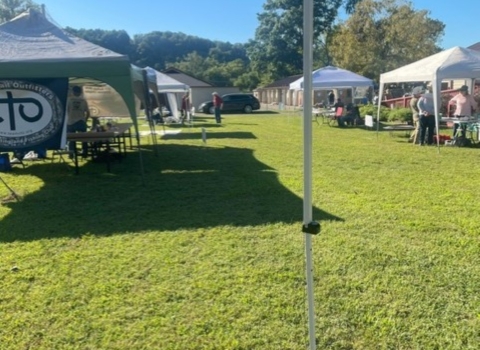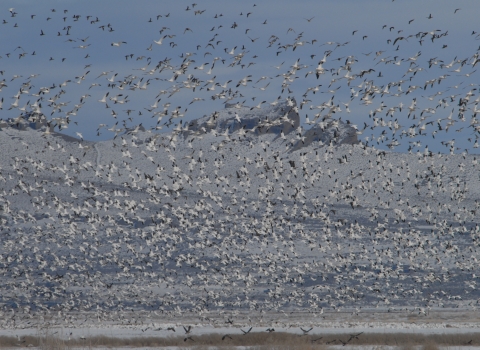Species’ success is the result of partnerships
The U.S. Fish and Wildlife Service today changed the Endangered Species Act classification of the Oregon chub from endangered to threatened, reflecting the species’ rebound from the brink of extinction thanks to state, federal and private efforts.
The status of the Oregon chub, a minnow found only in the Willamette Valley, has improved substantially and existing threats are not likely to put the chub in danger of extinction in the foreseeable future, a recent review found.
“The Oregon chub is now abundant and well-distributed throughout most of its historical range spanning the Willamette Valley,” said Robyn Thorson, Director of the Fish and Wildlife Service’s Pacific Region. “Populations of Oregon chub are currently found from the North Santiam River in the north to the Middle Fork Willamette River in the south.
Regional Director Thorson credited a dedicated partnership of federal and state agencies, local governments, private landowners, non-governmental organizations and university researchers with doing the conservation work that has resulted in the rebound of the chub.
“The Oregon Department of Fish and Wildlife and private landowners have played particularly important roles in improving and expanding habitat for the species,” Thorson said. “They have done this in part by using innovative conservation tools such as Safe Harbor Agreements, which help private landowners create and restore habitat for listed species on private lands.”
The Fish and Wildlife Service listed the chub as endangered in 1993 after receiving a petition with conclusive data citing a 98 percent reduction in the range of the species.
The decline of the chub came about at a time when the environment of the Willamette River was undergoing large-scale changes. Extensive alteration of the Willamette and its tributaries resulted in the loss of the sloughs and side channels that provide important chub habitat. Non-native fish have become established throughout the Willamette basin and are considered to be the greatest threat to the chub’s survival.
A recovery plan for Oregon chub established criteria for changing its status to threatened (downlisting) and for removing it from the list of endangered and threatened species (delisting). The plan recommended specific recovery actions that would protect existing sites, establish new populations, research the chub’s ecology and increase public involvement. The recovery plan determined that the species should be considered for reclassification to threatened when 10 populations of at least 500 fish were distributed throughout the species’ range, with a stable or increasing trend for at least five years. This goal has been exceeded.
Along with implementing the recovery actions, a team of state and federal agencies joined together and funded extensive surveys for Oregon chub. The surveys led to the discovery of many new populations. In addition, successful reintroductions established nine new populations of chub within its historical range. These actions have contributed to a dramatic improvement in the status of the chub and, currently, there are 38 populations of Oregon chub, of which 19 have more than 500 individuals, distributed throughout the Willamette Valley.
In March 2010, a total of 132 acres in 25 units of state, federal and private land were designated as critical habitat for the species.
Two Safe Harbor Agreements are in place to guide management of Oregon chub populations on private lands, and the Fish and Wildlife Service has recently completed a programmatic Safe Harbor Agreement to extend the program to allow more private landowners to participate.
The Oregon chub is a small minnow, less than 3.5 inches long, and is found only in the Willamette River Basin in western Oregon. The chub has an olive-colored back, grading to silver on the sides and white on the belly. Oregon chub thrive in slack water habitats such as beaver ponds, oxbows, side channels, backwater sloughs, low gradient tributaries and flooded marshes which provide abundant aquatic vegetation for hiding and spawning cover. In wild populations, Oregon chub live up to nine years.


